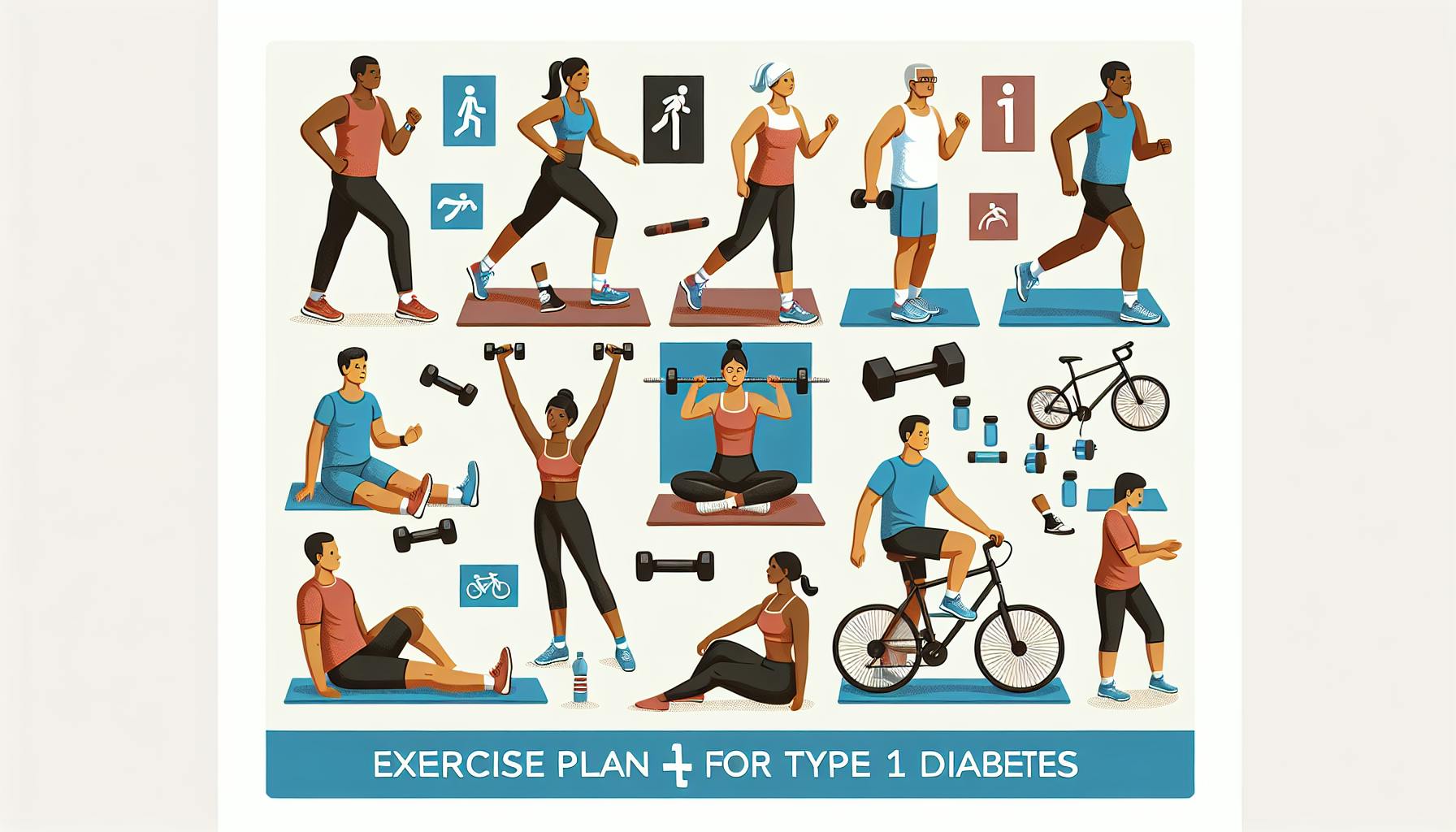Diabetes the executives frequently requires a diverse methodology that incorporates prescription, sustenance, and exercise. While diet and prescription assist with controlling glucose levels, practice assumes a pivotal part in further developing insulin responsiveness and generally wellbeing. This article frames a designated practice plan planned explicitly for diabetics to keep up with glucose equilibrium and improve personal satisfaction.
Why Exercise Matters for Diabetics
Practice is a foundation of diabetes the board as a result of its critical advantages:
Further developed Insulin Awareness: Active work builds your cells' capacity to assimilate glucose, decreasing the requirement for insulin.
Better Glucose Control: Exercise assists lower with blooding glucose levels by involving sugar as an energy source.
Weight The executives: Keeping a solid weight is vital for diabetics, particularly those with type 2 diabetes.
Cardiovascular Wellbeing: Diabetes expands the gamble of coronary illness, and customary activity can further develop heart wellbeing.
Stress Decrease: Active work discharges endorphins, diminishing pressure and further developing temperament.
Understanding what exercise means for glucose can assist you with making a protected and viable exercise routine everyday practice.
Pre-Exercise Contemplations
Prior to beginning any activity program, counsel your medical care supplier to guarantee it's protected and appropriate for your condition. Remember these tips:
Screen Glucose Levels: Really look at your levels previously, during, and after exercise to stay away from hypoglycemia (low glucose) or hyperglycemia (high glucose).
Remain Hydrated: Parchedness can affect glucose control.
Have a Bite Close by: In the event that your glucose dips under 100 mg/dL, consume a little tidbit, like a piece of natural product or glucose tablets.
Wear Agreeable Stuff: Pick steady footwear and attire to forestall wounds and further develop solace.
Warm-Up and Chill Off: Begin with a 5-10 moment warm-up and end with a cool-down to stay away from muscle strain and settle glucose levels.
The Diabetes Exercise Plan
This plan is intended to incorporate a blend of oxygen consuming activities, strength preparing, adaptability exercises, and equilibrium exercises. Consolidating these components can give exhaustive advantages.
1. Vigorous Activities
Oxygen consuming exercises are astounding for working on cardiovascular wellbeing and bringing down glucose levels. Hold back nothing 150 minutes of moderate-power high-impact practice each week.
Models:
Strolling: A 30-minute energetic walk five days seven days can fundamentally influence glucose levels.
Cycling: Fixed or outside cycling is a low-influence choice that further develops heart wellbeing.
Swimming: Incredible for joint wellbeing and a full-body exercise.
Moving: A great method for joining cardio with coordination.
Tips:
Begin slow and steadily increment force.
Wear a wellness tracker to screen pulse and action.
2. Strength Preparing
Strength preparing assembles bulk, which builds your body's capacity to utilize glucose. Integrate strength preparing practices a few times each week.
Models:
Bodyweight Activities: Push-ups, squats, and rushes are viable and require no gear.
Obstruction Groups: These are versatile and give flexible opposition levels.
Weightlifting: Begin with light loads and spotlight on appropriate structure.
Tips:
Rest for 48 hours between strength instructional courses to permit muscles to recuperate.
Perform a few arrangements of 8-12 redundancies for each activity.
3. Adaptability Exercises
Adaptability practices work on joint wellbeing and diminish the gamble of wounds. Extending is particularly helpful for diabetics with joint solidness or neuropathy.
Models:
Yoga: Upgrades adaptability, lessens pressure, and further develops balance.
Static Extending: Spotlight on significant muscle bunches after an exercise.
Dynamic Extending: Integrate delicate developments during your warm-up.
Tips:
Hold each stretch for 15-30 seconds.
Abstain from skipping, as it might cause muscle strain.
4. Balance Exercises
Balance practices decrease the gamble of falls, which is particularly significant for more established diabetics or those with neuropathy.
Models:
Judo: Consolidates slow, streaming developments with profound relaxing.
Single-Leg Stands: Work on remaining on one leg for 10-30 seconds.
Balance Sheets: Further develop soundness and coordination.
Tips:
Perform balance practices close to a steady surface for help.
Bit by bit increment the trouble as your equilibrium moves along.
Overseeing Glucose During Activity
It's fundamental to comprehend how your body responds to active work. This is the way to oversee glucose during exercises:
Know Your Numbers: Go for the gold sugar level between 100-250 mg/dL prior to beginning activity.
Change Drug: Work with your PCP to adjust insulin or prescription portions if necessary.
Stand by listening to Your Body: Quit practicing in the event that you feel discombobulated, feeble, or unwell.
Keep a Log: Track your glucose reactions to various activities to recognize designs.
Post-Exercise Care
In the wake of working out, do whatever it may take to recuperate and settle your glucose:
Cool Down: Endure 5-10 minutes extending and permitting your pulse to get back to business as usual.
Check Glucose: Guarantee it stays inside a protected reach.
Refuel: Consume a fair tidbit or feast, like yogurt with nuts or a little sandwich.
Hydrate: Hydrate to supplant lost liquids.
Extra Tips for Progress
Put forth Reasonable Objectives: Begin with sensible objectives and continuously increment force and term.
Make It Fun: Pick exercises you appreciate to remain spurred.
Include Companions or Family: Practicing with an accomplice can help responsibility.
Remain Reliable: Standard movement yields the best outcomes for glucose the board.
When to Stay away from Exercise
Certain circumstances might expect you to delay exercises:
Glucose levels are over 300 mg/dL.
You feel unwell or dried out.
You have a foot injury or open bruises.
Ketones are available in your pee (for type 1 diabetics).
End
Practice is a useful asset for adjusting glucose and working on by and large wellbeing for diabetics. A designated plan that incorporates oxygen consuming, strength, adaptability, and adjust activities can assist you with accomplishing ideal outcomes.






